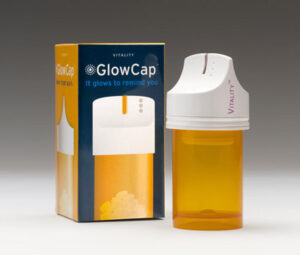Choice architecture describes the way in which decisions are influenced by how the choices are presented, and is a term used by Cass Sunstein and economist Richard Thaler in the 2008 book Nudge: Improving Decisions about Health, Wealth, and Happiness. Parallels are drawn between choice architecture and traditional architecture. Several ways of presenting choices and the way that presentation affects outcomes are explored in Nudge.
The book proposes that default outcomes of a situation can be arranged to be the outcome desired by the person or organization presenting the choice. According to the authors this is an underused method. For example a greater supply of transplant organs could be created by a system of presumed consent followed by an opt-out process rather than opt-in. Another principle suggested is laying out various outcomes of a decision in a way that is easy for the choice-maker to understand.
Choice architects are everywhere. If you design the ballot that voters use to choose candidates, you are a choice architect. If you are a doctor and must describe the alternative treatments available to a patient, you are a choice architect. If you design the form that new employees fill out to enroll in the company health care plan, you are a choice architect. If you are a parent, describing possible educational options to your son or daughter, you are a choice architect. If you are a salesperson, you are a choice architect.
Products
Nudges
How can we encourage large corporations, or small families, to conserve energy? Or Harley Davidson types to wear helmets? What about getting my mom to kick her smoking habit? University of Chicago economist Richard H. Thaler and law professor Cass Sunstein say that all it takes is a little nudge. Thaler and Sunstein believe that …
IFTTT if THIS than THAT
IFTTT is short for “If this, then that,” and the core building blocks of the service are based around that simple, cause-and-effect relationship. A trigger event happens, and a resulting action occurs. One example of a potential recipe: If you like a photo on Instagram, then IFTTT automatically saves that photo to the Dropbox folder of …
The fun theory
The innovative Volkswagen Fun Theory campaign was launched on the premise that “fun” action can change human behaviour, for the good of society. The ‘Speed Camera Lottery’ by Kevin Richardson attempts to make people obey the speed limit by using a cash incentive. The money from speeding fines was put in the ‘lottery pot’ and then drivers …
Egonomic Products
The Kitchen Safe The Kitchen Safe is a food-safe jar, it looks like any other kitchen container with its chunky body and screw-on lid. Unlike them, though, the lid won’t just come off any time you get the hankering for another bite. Instead, it remains sealed, depending on how much time you set it to …
Egonomic Services
Get Rewarded With Drivewise®. Insurers traditionally base car insurance quotes on factors that correlate to risk, including driving record, credit history, age, gender, marital status, vehicle, location, claims history and how much you say you drive. Technology now allows companies to adjust rates based on specific driving data. To get one of these policies, you …
Egonomic Software
No Angry Emails – ToneCheck™ The original idea for this Software was suggested by Richard Thaler: “A few of us have learned a simple rule: don’t send an angry email in the heat of the moment…We propose a Civility Check that can accurately tell whether the email you’re about to send is angry and caution …
iPhone App
Pact app pays you to exercise more Need a little extra incentive to stick to your New Year’s resolution? You know, the one about eating less and exercising more? Perhaps you’ve heard of GymPact, an app that rewards you for hitting the gym on a regular basis and charges you a fee if you don’t. …



